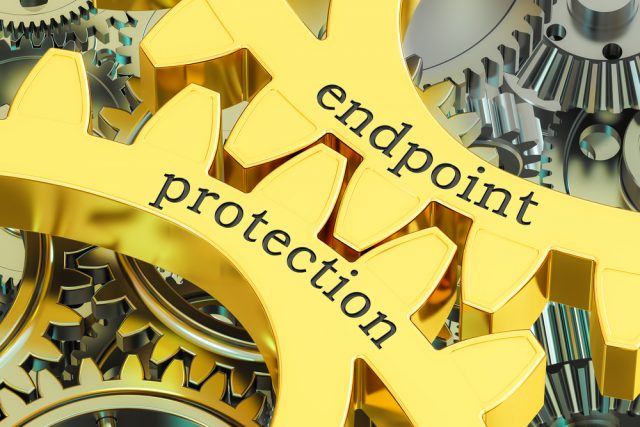

In the era of hybrid work, endpoints act as the nerve center of business operations — distributed across multiple locations and networks. While this has bolstered employee productivity and flexibility, the shift has also increased IT challenges, and the exposure to cyber threats targeting remote employees. As the workplace evolves, security must too. To minimize cyber risk and navigate compliance, it’s up to IT teams to intensively monitor, safeguard, and manage employee devices.
As the world of work continues to transform, IT departments are facing increasing demands, compounded by a shortage of skilled staff. They must find ways to boost their operational efficiency. In response, organizations are turning to always-on endpoint management. This approach ensures continuous oversight and control, which is vital as organizations shift to global digital workforces.
Expanding the horizons of remote work
Recent research shows 72 percent of businesses have adopted a hybrid work model. In today’s competitive labor market, employees seek ways to improve their work-life balance, so enterprises looking to keep the best talent need to ensure they are offering flexibility. However, this means IT teams must become more flexible too.
Remote and hybrid workers require IT teams to adapt to a dual environment, accommodating both traditional office settings and the evolving remote work landscape. For example, enterprises must ensure that they can manage both company and employee-owned devices if they are both being used for work.
The trend is moving towards a global digital workspace, where employees have access to essential work tools and resources from any location. This shift accentuates the need for robust endpoint management as organizations become increasingly distributed. Enterprises have an opportunity to access a wider talent pool, reduce staff turnover, and boost productivity. But achieving this goal necessitates significant investment in a secure, flexible, and efficient digital workspaces.
The rocky road to securing distributed workspaces
Securing distributed endpoints must be a key focus for IT teams, but there are significant roadblocks to navigate. 60 percent of organizations cite data security as their top remote endpoint management challenge, while half of IT and security leaders report that their current endpoint security solutions are insufficient for addressing this challenge effectively.
Firstly, remote software updates represent a major challenge for IT teams. The exploitation of unpatched software continues to be a primary attack vector for cybercriminals. But, as more devices are operating outside of the corporate network, the timely updating of software on remote devices is a growing concern. After all, a single unprotected device can become a gateway for cyber attackers to access the entire corporate network.
Both advancing cybercriminals and nation-state actors are increasingly using vulnerabilities to target organizations, aiming to steal sensitive data or cause operational disruption. The increased use of less secure home networks and public Wi-Fi exacerbates these risks. What’s more, threat actors are increasingly looking at exploits for firmware vulnerabilities on devices to carry out their attacks. This represents a large blind spot for many enterprises. Surprisingly, only 42 percent of companies perform essential firmware updates annually, and 32 percent do so even less frequently.
There is also an issue of trust when it comes to automating software updates. While updates from reputable major providers like Microsoft for the OS and Office might be reliable, IT teams may decide they don’t want to trust the update mechanisms from other software providers to avoid the risk of a supply chain attack.
The hybrid work model also raises the risk of device loss or theft. Approximately 70 percent of organizations report an increased threat of lost and stolen devices. Many endpoint management systems fail to track or secure offline endpoints, presenting a significant security gap, where endpoints can’t be remotely located, locked, or wiped if they’re not connected to the internet.
Enter always-on endpoint management
Effectively addressing these challenges is vital for meeting internal audit requirements and external regulatory standards, while minimizing the potential financial and reputational impacts of a security breach. Enterprises must apply a combination of full-disk encryption, comprehensive asset management, device backup and restore procedures, automated device recovery protocols, BIOS updates, and precise device location tracking to stay secure.
IT leaders are tasked with the careful implementation of these solutions, with two-thirds expressing major concerns about secure communication with remote endpoints. Always-on management addresses these worries by ensuring timely software updates and consistent data transmission, and securing and optimizing distributed work environments.
Cellular connectivity-based solutions that can find, lock, and erase data on devices provide a resilient approach to remote endpoint management, particularly when devices are not connected to the internet or are powered off. Improved endpoint management, according to 75 percent of IT leaders, could significantly enhance data protection, reduce downtime, increase employee productivity, ensure compliance, and potentially lower IT costs related to PC maintenance and replacements.
As the workplace of the future rapidly approaches, it’s essential that companies refine their endpoint management strategies to remain competitive in the evolving landscape of hybrid work.
Dan Allen is VP, Enterprise Security Solutions, HP Inc.
